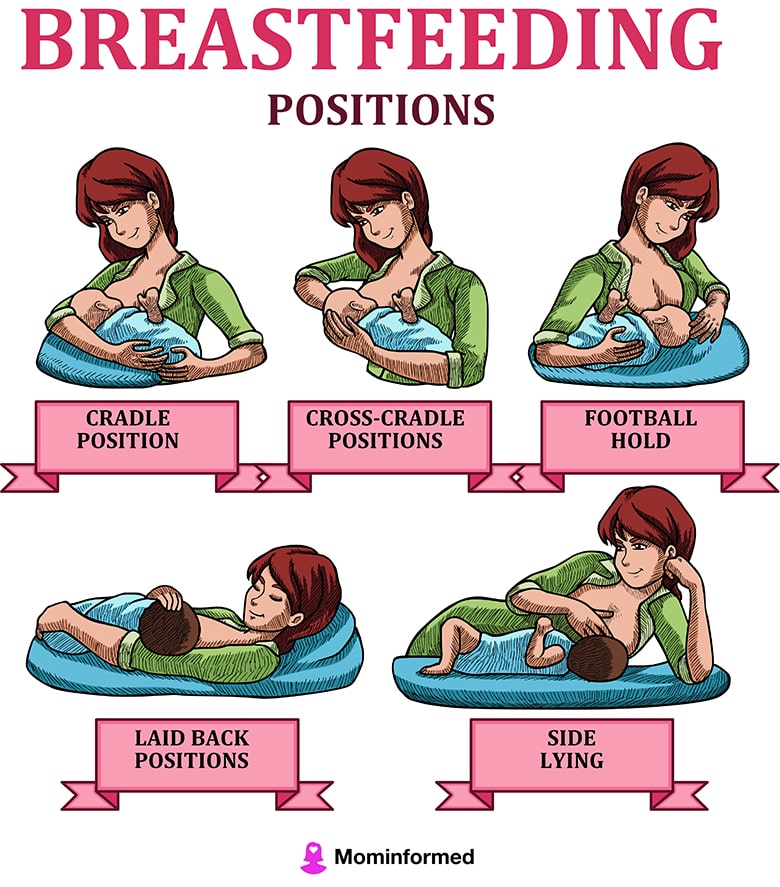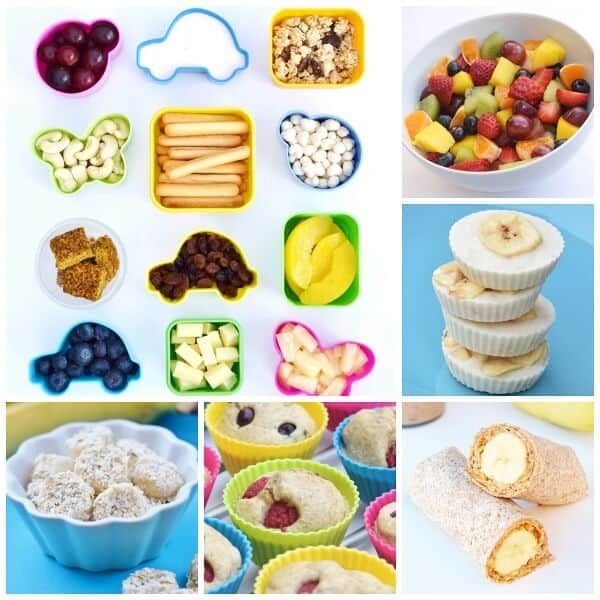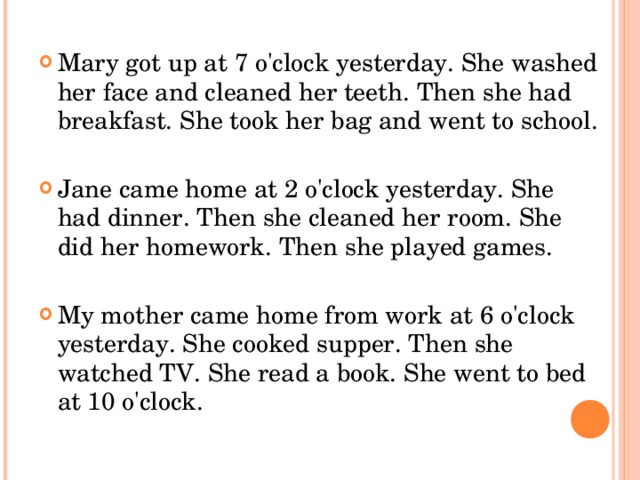Baby refuses to feed himself
Help! My Child Won't Self-Feed! Teaching Your Child to Feed Herself
Parents often ask me for advice about how to encourage their child to self-feed.
Common questions include:
• Should I force her to feed herself?
• Should I let him go hungry, so he starts self-feeding?
• Should I introduce utensils or let him use his hands?
• What if she doesn’t eat enough?
The answers are no, no, yes and worry-not.
Babies should be provided with opportunities to self-feed as early as possible. Babies and children that are allowed independence and control of their eating tend to be happier and more adventurous eaters. They are also better at regulating their hunger and satiety cues.
Self-feeding is a developmental process. It can start by simply allowing your baby to hold their own bottle or your breast. Some babies initiate this themselves; others need gentle encouragement. Children with developmental delays or a disability may need extra support to become involved in their feeding times. As soon as solid food is introduced, babies should be presented with foods on their tray to touch and explore with their hands. Whether you are introducing baby-led weaning or purées, it’s important to give your baby frequent opportunities to touch food and eventually bring it toward their mouth. This early food exploration allows your child to learn about food with all of their senses.
Self-Feeding: A Developmental Continuum:
Hands and toys to mouth
Reaching, patting, or holding bottle or breast
Touching and squishing purées on tray
Picking up pieces of food with palms then fingers
Holding and dipping foods and utensils
Bringing utensils to mouth
Scooping and poking food with utensils and bringing to mouth
Why isn’t my child self-feeding?
• Developmental Delay
• Sensory Processing Issues
• Parents don’t like mess
• History of slow growth: parents fear loss of control and their child will not eat enough
• Cultural differences
• Feeding aversion
How Can I Introduce Self-Feeding?
Self-feeding does not need to be an all-or-nothing approach. I believe in wee baby-steps for self-feeding. There is no need to push/force or make your child miss a meal while they are learning to self-feed. Here are some option for introducing self-feeding.
I believe in wee baby-steps for self-feeding. There is no need to push/force or make your child miss a meal while they are learning to self-feed. Here are some option for introducing self-feeding.
• Co-feeding: Child and parent participate in the feeding at the same time. Child feeds herself and parent feeds her at the same time.
• Child does a few bites at the beginning of the feeding when hungry and motivated to eat. Parent feeds the remainder of the meal.
• Child helps to self-feed every few bites (e.g., every 3rd bite or using turn taking).
• Parent works on self-feeding during just one meal per day when they don’t feel too rushed/stressed (e.g., dinner vs breakfast when trying to get out the door for school drop-off).
Babies (0-6 months):
The beginnings of self-feeding emerge when babies start to bring their hands and toys toward their mouth for sensory exploration. Mouthing is an important part of a baby’s feeding development.
Allow your child to control their intake from infancy. Follow your baby’s feeding cues and allow her to pull away from the breast/bottle when finished or in need of a break. Allow your child to come back toward the breast/bottle when she wants more. This is the start of self-feeding and self-regulation.
If you child is not reaching for the breast/bottle, gently bring her hands upward toward midline and rest or rhythmically tap them on your breast or the bottle. If your baby pulls away, that’s ok, maybe she’s not ready yet. You can hold your breast or the bottle and gently place your child’s hands on top of yours for skin-to-skin contact. This will encourage her to learn to bring her hands toward midline.
Adding a rubber grip or handles around the bottle and starting with a small-sized, lighter bottle can make holding easier for beginners with little hands.
Babies (6-12 months):
Always place food in front of your child on his feeding chair. If he is resistant to touch the food, gently support his arms from under the elbow and guide his hands toward the food. This also works very well for children with motor delays who have difficulty initiating reaching and grasping by themselves. They may benefit from some gentle encouragement and extra help to support their delays.
If he is resistant to touch the food, gently support his arms from under the elbow and guide his hands toward the food. This also works very well for children with motor delays who have difficulty initiating reaching and grasping by themselves. They may benefit from some gentle encouragement and extra help to support their delays.
If your child is very resistant to touching her food, never force her, instead model touching yourself, or try counting 1-2-3 while tapping her hands in the food, then quickly wipe her hands to remove the food. When working with children with sensory differences, I often say “touch-touch-touch, wipe-wipe-wipe”, followed by praise and smiling. With repeated exposure, your child will become more comfortable with touching foods and leaving food residue on her hands.
Some children with sensory issues require a period of just looking at food and perhaps smelling it before they are ready for touch. The key with self-feeding (and all feeding) is not to push or force.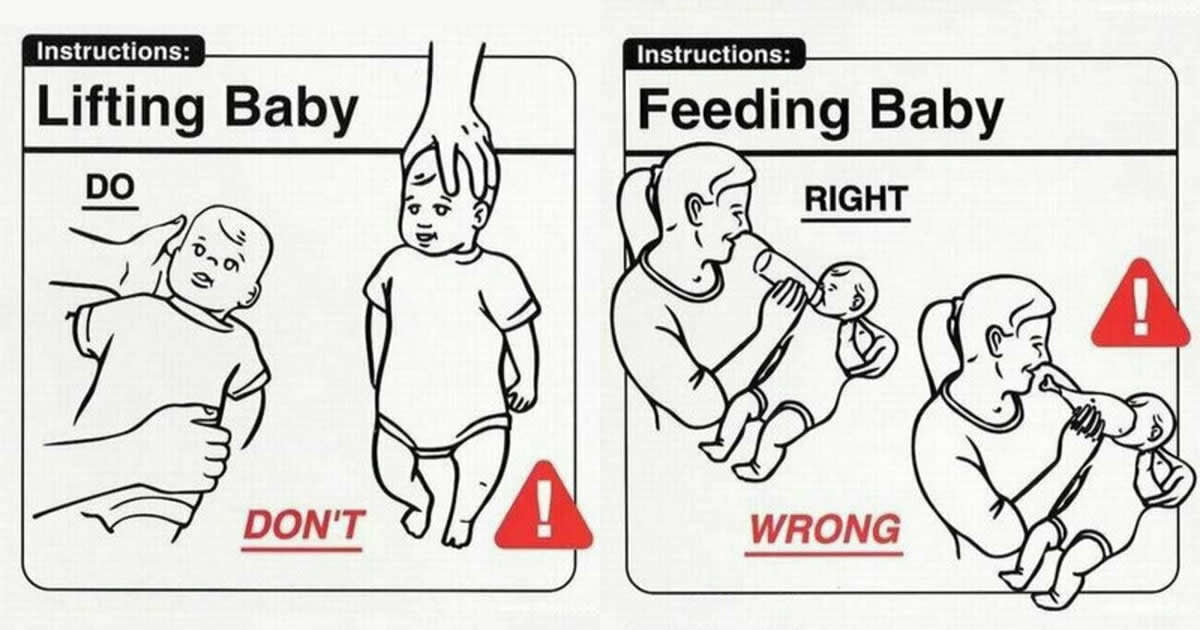 If your child is not yet ready to touch foods, just start with looking and modelling the behaviour.
If your child is not yet ready to touch foods, just start with looking and modelling the behaviour.
You can introduce a baby-sized spoon with a small, round, grippy handle or a pre-spoon like the NumNum GOOtensil. Try dipping and preloading the spoon and leaving it on the tray or handing it to your child vertically. Vertical presentation of the spoon sends a message that you are not trying to put the spoon in your child’s mouth, you are handing it to them. Often, I find kids will reach for the spoon and bring it toward their mouth.
If your child is resistant to holding a spoon, you can dip familiar teethers, toys, or mouth brushes (e.g., The Baby Banana Brush) in foods and let them bring the item to their own mouth.
Start with thicker or mashed foods that stick well to the utensil, so the food doesn’t slide off when your child tries to bring it toward their mouth.
Silicone Fresh-Food Feeders work well to encourage your child to hold and bring food toward his/her mouth. These feeders can help kids that are gagging or have difficulty with chewing and/or moving pieces of food around in their mouth.
These feeders can help kids that are gagging or have difficulty with chewing and/or moving pieces of food around in their mouth.
Toddlers (12-24 months):
Offer both finger foods and utensils at feeding times. Both are equally valuable skills.
Try cutting foods into cubes, fun shapes, or long strips. Toddlers often respond to fun-food presentation. Foods that are cut into long sticks or fun shapes often work well for toddlers that are self-feeding.
Backward Chaining for Self-Feeding:
If your child is resistant to self-feeding, try backward chaining to teach the skill. This involves teaching the very last step first (putting spoon in their mouth) and gradually working toward the first step (scooping the food from their bowl).
• Hold the loaded spoon 1 inch in front of your child’s mouth. When they open their mouth to indicate “yes”, gently place their hand on-top or your hand and say “help” as you move the food into their mouth together. Give specific praise, “good helping” and smile.
Give specific praise, “good helping” and smile.
• Once this step is well established, move your hand toward the end of the spoon, so the handle is accessible for your child. When they open to accept the spoon, gently place their hand on the handle and say “help” as you move the spoon into your child’s mouth together.
• If your child is successful with this, you can slowly start letting go of the spoon as your child grips the handle. Remember to keep the food about 1-2 inches from your child’s mouth. Give specific praise, “Good holding the spoon!”
• Over time, start moving the spoon lower, further away from your child’s mouth, and more toward the bowl. The distance between your child’s mouth and the spoon will gradually increase and your child will slowly start to learn to reach toward the spoon in the bowl.
• As a final step, you can scoop the food and leave the spoon in the bowl. Your child will learn to reach down and grab the loaded spoon and bring it toward his mouth. Lastly, you can use hand-under-hand assistance to scoop the food together. Give specific praise “Good scooping!”
Lastly, you can use hand-under-hand assistance to scoop the food together. Give specific praise “Good scooping!”
In my experience, hand-under-hand (your hand under your child’s) is better tolerated than hand-over-hand (you hold your child’s hand), as I find many children with sensory processing issues are very resistant to having their hands touched. As an adult, I wouldn’t want anyone to grab my hands, as my hands are very much apart of my personal space. I always aim to treat kids the way I would like to be treated. Remember to guide versus push your child toward self-feeding.
Family Meals
Practice family meals and eat with your child. I invite you to read my blog about the benefits of family meals. You child will learn to self-feed by watching you. Seeing which foods you eat and how you feed yourself or use utensils is a wonderful learning opportunity.
Developmental Delay and Disabilities
Some children with developmental and motor delays require extra support and/or adaptive equipment to support their journey with self-feeding. Your child may benefit from support from a Speech-Language Pathologist (SLP) or Occupational Therapist (OT) to promote optimal seating and positioning and prescribe appropriate feeding equipment (e.g., tray, mat, utensils).
Your child may benefit from support from a Speech-Language Pathologist (SLP) or Occupational Therapist (OT) to promote optimal seating and positioning and prescribe appropriate feeding equipment (e.g., tray, mat, utensils).
Your child may require extra help bringing his hands toward midline or initiating touching and exploring foods. Follow your child’s cues and view self-feeding as a developmental journey. Even if your child will not be able to achieve full independence with feeding, it’s always important to provide him with opportunities to explore and exercise control at mealtimes.
Mess is Best!
Learning to eat is an immersive experience. Babies and children learn about food through play and sensory exploration. This means that mess is part of the journey. Often parents tell me that they don’t like a mess at mealtimes, and they fear that they are teaching their child bad eating habits. I assure parents that messes are essential to learning to eat. When my kids were babies, I would strip them down to their diapers at mealtimes and let them engross themselves in their meal by touching, squishing, and smashing. As babies and toddlers, I allowed them to learn to eat, later, as they got older I moved some of the focus toward manners. My kids are teenagers now and I assure you that are no longer squishing, smashing, or throwing their foods during family meals. Please remember that every mess can be cleaned up and your child won’t always be a messy eater; however, it’s an essential stage in their feeding development.
When my kids were babies, I would strip them down to their diapers at mealtimes and let them engross themselves in their meal by touching, squishing, and smashing. As babies and toddlers, I allowed them to learn to eat, later, as they got older I moved some of the focus toward manners. My kids are teenagers now and I assure you that are no longer squishing, smashing, or throwing their foods during family meals. Please remember that every mess can be cleaned up and your child won’t always be a messy eater; however, it’s an essential stage in their feeding development.
It’s also normal for babies and toddlers to throw food and utensils on the floor. They are enjoying learning about cause and effect: watching the item fall, make a noise, and seeing the food splat on the floor. They also enjoy watching your response. Try not to be discouraged if you child is throwing food and utensils on the floor and consider this as a normal part of their feeding and cognitive development.
Cultural Considerations
As a clinician it’s important to discuss with families whether self-feeding and utensil-use are important to them. Often our goals as clinicians may not be in-line with what is important to families. I always ask families what a typical family meal looks like and whether self-feeding and using utensils is one of their goals. I further discuss cultural considerations in my Family Meals Blog.
Often our goals as clinicians may not be in-line with what is important to families. I always ask families what a typical family meal looks like and whether self-feeding and using utensils is one of their goals. I further discuss cultural considerations in my Family Meals Blog.
Growth Issues
When a child has not been eating or growing well, self-feeding often becomes less of a priority for parents. They fear that letting their child self-feed will result in reduced food/caloric intake. Parents in this position are often measuring food and monitoring their child’s intake volume. Allowing their child to self-feed means that parents feel unsure if their child has had enough to eat. In this situation, I encourage parents to introduce self-feeding gradually. I counsel parents that letting their child move toward independence will eventually lead to better eating patterns. Co-feeding works very well in this situation, where the child is provided with opportunities to self-feed while their parent is feeding them at the same time (see options above). This allows the child to learn about self-feeding, while the parent feels more relaxed and comfortable that their child is getting enough calories to grow and thrive.
This allows the child to learn about self-feeding, while the parent feels more relaxed and comfortable that their child is getting enough calories to grow and thrive.
Slow and Steady
As with all feeding steps and stages, self-feeding should not be forced. It can be viewed as a developmental learning curve that starts early in infancy. Always follow your child’s lead. If she is not ready to self-feed yet, just provide opportunities, but don’t push. Evidence has repeatedly demonstrated that the more stressed kids feel at mealtimes, the less likely they are to eat. Keep mealtimes positive, model good eating behaviours during family meals, and follow your child’s lead; with time and practice he will learn to feed himself and become a happy, independent little eater.
4 Mistakes that Slow Baby Self Feeding
Feeding your baby real food is an important step for all parents. But baby self feeding is a goal for all parents, especially during the first year of life.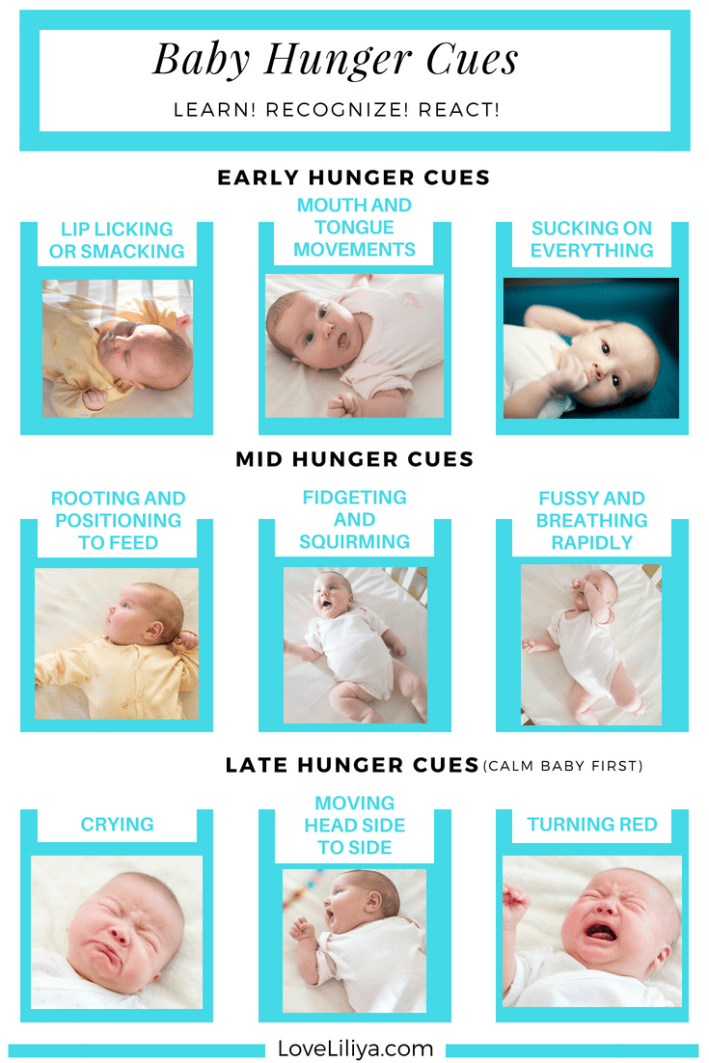
The stakes are high for developing healthy food preferences and learning to eat, so don’t let these four common mistakes slow your baby down.
Baby feeding and the journey that goes with it is not always smooth-sailing, or easy.
In my many years of working with new mothers as a pediatric nutritionist, I know that the decisions made in this first year are always made with good intentions.
However, some decisions are made out of fear, hype, or lack of knowledge.
As a result, feeding mistakes that slow your baby’s abilities around self feeding can be made.
Don’t let them get in the way of really raising a healthy eater down the road.
Why is Starting Solids a Challenge?In a nutshell, the quick pace of food transitions your baby will make in the first year is the crux of most baby feeding mistakes.
In a period of 6 months, your baby will move from an all liquid diet to eating your family’s mealtime food.
That means the food transitions are fast.
Once you get used to one thing, it’s time to move on to the next.
For instance, you and your baby master pureed foods.
But, now your baby wants finger foods and seems unsatisfied with baby cereal.
Yes, the pace in the first year of life with food is quick.
Another challenge is the wide range of nutrients babies need in the first year.
Key nutrients for brain development, bone growth, and sufficient calories and protein for weight gain and kid’s growth should be top of mind.
Being mindful of these and fitting them all in can feel overwhelming.
If that isn’t enough to worry about, the repercussions of moving too slowly with food transitions can have its own set of ramifications.
For example, your baby may lose interest in infant rice cereal if they see it every day and at most meals.
Or, your baby may tire of exploring solid foods if she isn’t progressively challenged with new textures and flavors.
She may even prefer purees, baby food pouches, or get stuck on a liquid diet (hello, sippy cups of milk), if she isn’t challenged with more food flavors and textures.
If you’re like most parents I know, you want to get the baby food stages right.
From setting a reasonable baby feeding schedule to knowing when to start solids and make important baby food transitions, not only do you need to know what to do, you need to know what not to do, as well.
Signs You’re Hindering Self FeedingIf feeding your baby gives you a nagging feeling that things are getting off track or aren’t going as well as planned, you may be making some feeding mistakes.
Whether you need more information, or got the wrong advice, you may unknowingly be caught up in some very common mistakes.
If your baby isn’t gaining weight as predicted, is struggling with the spoon or baby led weaning, or if transitioning to a balanced meal plan isn’t going as well as you had hoped, you might be hindering your baby from moving forward with eating.
Your feeding style and approach may be counterproductive, especially if you’re using negative feeding practices.
Unfortunately, these can interfere with your baby’s eating, development, and food learning.
4 Self Feeding Mistakes You’ll Want to AvoidIn my line of work, I see several mistakes parents make when feeding their kids.
It’s not that I look for snafus, it’s just that when parents are really struggling, they show up on my doorstep.
As a way to help you side-step some of these challenges, I’ve outlined the top four feeding mistakes I see parents make with their baby.
Some are related to the process of feeding, while others involve food selection.
Mistake # 1: Trying to Keep Baby Clean while EatingIn the quest to stay clean and tidy (and lessen the laundry load), you may be swiping your baby’s mouth with a washcloth after every bite, staying with spoon feeding (because it’s cleaner), or avoiding messy foods to cut down on the time and effort it takes to clean up after a meal.
Why is this a mistake?
It robs your baby of important learning experiences, such as exposure to different textures, smelling food completely and learning how to manipulate food using his hands and mouth.
Serious investigation happens during meal time, and there’s no better way to learn about food than to get down and dirty with it.
Those pictures you see of babies covered head to toe in yogurt, spaghetti sauce and cake?
Yeah, that’s what I mean.
Case in Point:Long ago, I taught one of my clients to let her baby self feed with a spoon. I asked her to refrain from using the washcloth until the end of the meal, and charged her with the task of offering her daughter more food variety.
After implementing these interventions, both mom and baby started having a grand time with meals!
How to Keep Baby Clean While EatingUse the kitchen sink as a back-up bathtub.
Stock it with towels, soap and plastic measuring spoons and cups so your baby can go from high chair to kitchen tub (with supervision, of course) for a quick clean up.
Get the Food & Nutrients for Baby’s Brain!
Mistake #2: Spoon-feeding Your Baby for Too LongThis ties into #1 as a way to keep a cap on the mess.
But also, there may be a misconception that babies need to be spoon-fed for a year.
Not true.
Babies can begin the transition to chopped, table foods around 8 months of age.
And if you’re a follower of baby led weaning, you know that solids can be introduced at 6 months.
By one year, your baby should be eating table food. In other words, the food your family is eating.
You’ll just modify this into age-appropriate textures (shredded, chopped, etc), and encourage baby self feeding (with assistance as necessary).
Your baby should also be using an open-top cup with small amounts of liquid so that spills are minimal.
Of course, follow your baby’s developmental progress and cues for readiness to see when the time is right to transition to more textured finger foods.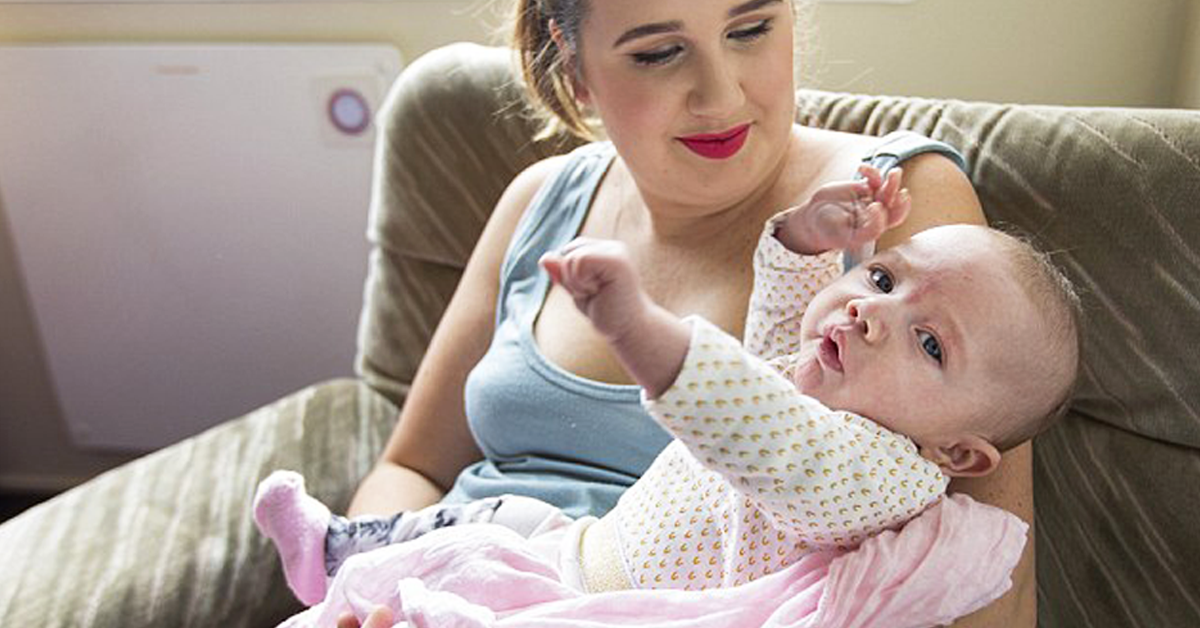
If you’re testing solid foods with a baby led weaning approach, be sure to read about iron and baby led weaning in this post or grab my up-to-date, step-by-step book called The Smart Mom’s Guide to Starting Solids.
It includes advice for spoon-feeding, baby led weaning and guidance for using both to optimize nutrients and self-regulation of eating.
When to Stop Spoon Feeding BabyBaby Ben was 14 months and still being spoon-fed.
He came to me because he wasn’t gaining weight and his length had fallen behind.
He was simply disinterested in the spoon—he wanted to feed himself, and he didn’t want mush anymore—he wanted the real food his family was eating.
Most babies will want to start self feeding between 6 and 8 months.
This usually coincides with the development of the pincer grasp.
While Ben’s mom was understandably afraid to give up spoon-feeding (because he wasn’t growing well and she wanted to be sure he ate enough), once she introduced table foods, gave him some independence, and let him eat to his own satisfaction, Ben started to thrive again.
Most babies will want to start self feeding between 6 and 8 months. This usually coincides with the development of the pincer grasp. #startingsolids #selffeeding Click To Tweet
Mistake #3: Offering Foods that are Too HealthyI believe all babies should receive real, natural, unadulterated foods of all flavors, with an emphasis on food introduction and lots of food variety and exposure.
But I see a trend in feeding babies that emphasizes fruits, vegetables and whole grains.
This can become a problem because babies have limited stomach capacity and these foods are filling.
When your baby’s tummy is full, there’s a risk of missing other important foods and nutrients such as choline and DHA.
Whole grains, fruits and veggies also tend to be low in fat, which is an important nutrient for babies and their brain growth.
Certainly babies need these healthy foods, but they also need meat (or non-meat substitutes such as beans), fortified cereal, healthy fats and dairy (or fortified non-dairy) sources.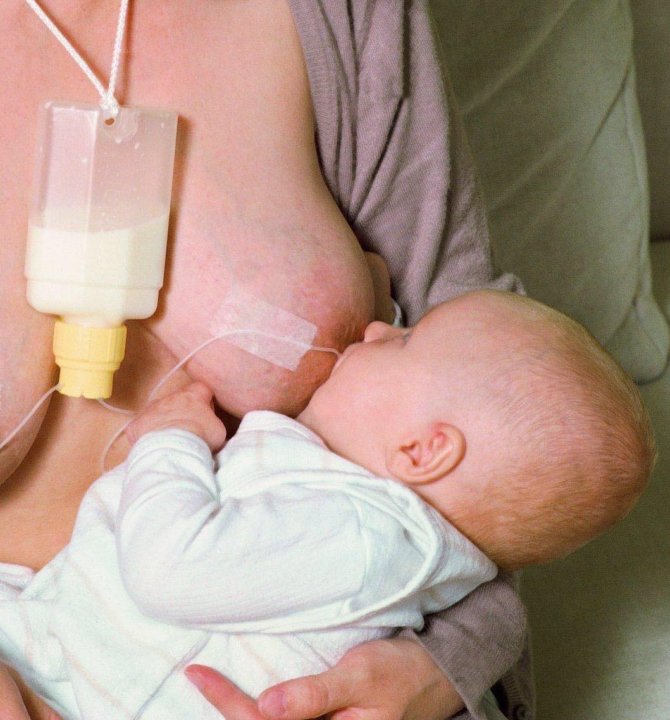
In fact, if I had the opportunity to re-write the food introduction guidelines, I’d advise the following:
- Meat First (because it’s full of iron, zinc, B vitamins, choline and other nutrients important for brain development.)
- Vegetables (because these are a learned taste and flavor and need more time and exposure for acceptance.)
- A variety of iron-fortified whole grains, fruit, and dairy products (or non-dairy alternatives if necessary, introduced as yogurt and cheese or as a baked in ingredient. (Note: no liquid milk until one year of age.)
Of course, there’s eggs, fish, peanuts, and nut butters — the food allergens that need to be introduced before 12 months, too.
My stance on “which foods first” is based on nutrient priorities and your baby’s budding flavor palate.
[Read: How to Introduce Peanuts to Your Baby]
Case in Point:Josh, at 13 months, was eating a high fiber diet, filled with whole grain breads, lots of vegetables and fruits, and very little added fat.
In fact, his mom stated,
“I never thought to add fat to his meals—I thought that would be unhealthy.”
Josh’s diet appeared very healthy on paper, but in reality, it wasn’t meeting his nutritional needs.
For example, babies need 40-50% of their total calories in the first year from fat.
Josh certainly wasn’t getting this.
Once Josh’s mom understood that babies need a good amount of fat daily and where and how to get it, she was able to plan more appropriate meals for him.
The added benefit?
With fat, foods (especially vegetables) were tastier and he ate better.
Mom opened up to more variety (French toast, pancakes, sandwiches, etc—all cut up in bite-sized pieces) and Josh enjoyed eating again.
Mistake #4: Allowing Bites or Gulps of Adult FoodsJust a little sip of my coffee? Sure.
A bite of my brownie? Why not!
What’s the harm in a little sip of soda, a taste of coffee, or a bite of a brownie?
Nothing immediate, but over the long haul, you might find your little infant growing up to be a soda swigging, sweet tooth kid if you’re not careful.
It’s true—what we offer babies now influences their taste preferences later on.
Regarding sweets for babies, I suggest holding out until age two.
The American Heart Association makes the same recommendation.
What about the one year birthday cake?
It’s ok because it’s not a “regular” offering.
Avoiding sugary foods early in life may help curb your baby’s sweet tooth.
She may kick the sweet preference into high gear later on, but you’ll have armed her with early exposure to healthier fare.
Remember I said those tummies are tiny?
They don’t give much leeway for sweets. I wouldn’t want you to sacrifice nutritious foods for them.
I also recommend holding off on caffeine, too.
Babies don’t need a stimulant (aren’t we mostly trying to calm them down?!), nor do toddlers or children for that matter.
There’s no place for caffeine in a child’s diet—so if you can manage to avoid it, bravo.
Last, artificial sweeteners and colors fall into this category too.
Try to limit them, especially for babies and young toddlers, even if “just one bite” seems harmless.
The dose relative to body weight is considerable.
I’ve searched and searched, and there’s no upside to offering artificial food colors to young children.
Move Forward with Self Feeding WisdomOf course, don’t beat yourself up if you’ve made any of the above baby self feeding mistakes.
Just take a step forward and make the adjustments you need to feed your baby well and with confidence.
That’s the fast path to encouraging self feeding and helping your baby move through his feeding and eating milestones.
Need More Help with Encouraging Self Feeding?My book, The Smart Mom’s Guide to Starting Solids is a quick read that cuts through the fluff and gives you exactly what you need to know to feed your baby in the first year.
A baby feeding schedule, baby feeding chart, baby food stages, baby food chart, when to start solids and more!
Grab your copy today!
Don’t forget to check out our workshops, classes and guidebooks to help you raise nourished children, inside and out.
BABY FEEDING MISTAKES | AVOID These 4 Mistakes & Start Your BABY on a HEALTHY EATING PLAN
Watch this video on YouTube
This post was updated September 2020 from its original.
The child does not want to eat on his own? Psychologist's advice
One of the most common problems in new mothers is the child’s unwillingness to refuse complementary foods and finally sit down at the table, eating with the help of cutlery on their own. This issue becomes especially urgent if the period for mastering such a skill is already suitable for the age of the baby.
As a rule, by the year the child begins to chew and bite solid food. By the age of 1.5, he becomes the full owner of his spoon, confidently holds it and scoops soup with it. nine0003 But what to do if the baby has long crossed the annual threshold, but still continues to eat from his mother's hands, and every attempt to seat him at the table ends in failure?
Possible reasons why the child did not start eating on his own:
1. Were you afraid that the baby would choke on solid food, and each time you grind it into gruel? Alas, now the child does not want to eat on his own. He just got used to his diet and does not want to part with it. nine0004
Were you afraid that the baby would choke on solid food, and each time you grind it into gruel? Alas, now the child does not want to eat on his own. He just got used to his diet and does not want to part with it. nine0004
2. Time. “There is a time for everything” is a well-known proverb. If the child is less than 1.5 years old, it is quite possible that his “time” has not yet come. Each child is individual, and it is absolutely normal to lag behind their peers in some skills, and in some, on the contrary, overtake them.
3. The constitution of the body. For someone, a handful of salad sprinkled with olive oil is enough, and for someone, a piece of meat with a side dish and a cold dish for an aperitif will not be enough to saturate. Perhaps your child is one of those lucky ones who are predisposed to eat a little less than required. Or he might just not be hungry. In any case, do not force the baby to eat by force. He must be hungry so that the instinct for food consumption begins to work to the fullest. nine0004
nine0004
4. Your assertiveness. It follows from the previous paragraph that the obsessive desire to feed the child only exacerbates the problem. He remembers your tearful requests to eat a dish or an increase in tone on it, and then reproduces "table" memories in a negative context. No need to force the child to eat if he does not want to. If he wants, he will do everything to get what he wants.
5. Psychological trauma or neurotic reactions. Perhaps, during the meal, the baby was frightened - he heard a loud cry or choked. Negative emotions remained in the memory, so now the baby can only take food from the mother's hands. nine0004
6. Too gentle upbringing. Imagine that you lived in your comfort zone for a long time, everything was available to you, you were spoon-fed, love and comfort were with you throughout the day. And you didn't do anything about it. And now they took that away from you and told you to take some action yourself. Hard? That's hard for a kid. He needs time to get out of his comfort zone, where he lived and grew up quietly. Give your child some time and motivate him to eat on his own. nine0004
Give your child some time and motivate him to eat on his own. nine0004
7. Prolonged breastfeeding. One of the most common reasons why a child does not want to eat on his own. Complementary foods should begin to be introduced into the baby's diet no later than 6 months of age, and by the year, ordinary food should make up 90% of the total food allowance. Breast milk in this age period can be a supplement to meals, as well as a nightly supplement. Otherwise, if breastfeeding is the main food for a baby for a year, then you will not only have problems with independent food intake, but also refuse to consume many foods that are important for harmonious growth and development. You can (and should) solve this problem by gradually replacing breast milk with regular food. In the event that it is not possible to “roll up” the GV, it is best to consult with a specialist. nine0004
Problems best diagnosed by a specialist:
1. Psychological conflict. The child does not want to eat on his own in a year because of the barriers created in the head, provided by the parents in the first year of the baby's life. He eagerly remembers all the habits of his parents, their commitment, for example, to healthy food or hatred of meat, etc. Only a thorough conversation between parents and a specialist can help break down these barriers. nine0004
The child does not want to eat on his own in a year because of the barriers created in the head, provided by the parents in the first year of the baby's life. He eagerly remembers all the habits of his parents, their commitment, for example, to healthy food or hatred of meat, etc. Only a thorough conversation between parents and a specialist can help break down these barriers. nine0004
2. Rumination - a special type of gag reflex in infants. It is characterized by the reverse swallowing of vomit, while nausea is not observed. If vomiting continues, eating is accompanied by neurosis. These children also have an increased sensitivity of the stomach. Therefore, it is better to consult a doctor as soon as possible and identify violations in the digestive system. The specialist will select an individual nutrition plan for the baby and identify his intolerance to various dishes. nine0004
3. Complete refusal of food. Again, this is due to the disturbed psyche of the child. It can be characterized as a protest towards parents, hatred for certain foods, unwillingness to change the type of food (prolonged breastfeeding), etc.
It can be characterized as a protest towards parents, hatred for certain foods, unwillingness to change the type of food (prolonged breastfeeding), etc.
4. Feeling unwell. The child does not want to eat on his own, not because of his own whims, but because of illness. Try to take him to the doctor as soon as possible so that prolonged malnutrition does not lead to new problems. nine0004
How can I help my baby learn to feed on his own?
There are many ways to make the child want to eat himself. The main thing is to convince him that he is in a fairly comfortable environment for him.
1) Involve him in independently overcoming the current problem. Do not complicate your life - let him eat when he really wants to.
2) Be sure to consider his individual preferences. Do we eat what we don't like? No. So the child eats what he likes. Of course, this is not a reason to feed the baby with "bad" food, come to a consensus on this issue. nine0004
nine0004
3) Accompany your meal with small interactive games: games “for mom, for dad”, “airplane flies”, etc. You can come up with whatever your imagination desires. Just remember - the child at this moment should want to eat.
4) Decorate dishes, buy colorful dishes. For example, warm shades of red, yellow, orange encourage food intake. All shades of blue, too. Thus, the baby will associate food with a positive, which means that he will be comfortable eating on his own. nine0004
5) Sit at the table when you eat yourself. The kid should get used to family dinners. At first, offer not a standard portion, but a micro one. For example, a slice of cucumber, bread or an apple. Gradually transfer to the "common" table.
6) Do not create multiple snacks. Try to follow the diet. In a year, a child has enough breakfast, lunch, afternoon tea and dinner. At this age, one night feeding is not excluded. If in between meals you supplement your baby (fruits, baked goods, dairy products, etc. ), do not be surprised that he does not eat porridge for breakfast, and soup for lunch. nine0004
), do not be surprised that he does not eat porridge for breakfast, and soup for lunch. nine0004
7) “On demand” breastfeeding, as well as the previous paragraph, does not give you the opportunity to teach your child to eat independently. The baby is already full of mother's milk, so a much less tasty soup is unlikely to arouse his interest. Another situation is if the child would really be hungry for dinner, because more than 3 hours have passed since breakfast ... Intervals between meals (including breast milk) must be, especially if the child is over a year old.
8) It is very important to develop the right eating habits. Try to prepare healthy (but tasty) food and offer it to your baby. You need to start doing this as early as possible. nine0004
It is important to remember that inventing problems and self-diagnosis will only harm the delicate issue of child nutrition. Talking to a competent specialist will always be more effective than self-treatment, and is more likely to help solve a childhood eating disorder faster and easier.
If the child does not want to eat on his own
I know that many mothers are worried about the child's selective appetite. Here I was lucky - my baby is not allergic, not fussy, he eats almost everything. But he doesn't want to eat. He is already two years old, and he refuses even to take a spoon in his hands. Our grandmothers unanimously shout that we have spoiled our son, that all children at this age have long been eating themselves. How to teach a child to eat on their own? nine0088
Let's try to get you interested. Have family dinners. Looking at adults eating on their own, the baby will want to comply. If the family rarely gathers at a common table, you can use the authority of an adult significant for the child. Usually it’s dad, older brother: “Have you ever seen me feed dad with a spoon? No. Do you want to be as strong as your brother?"
Children begin to do many things by looking at their peers. If an older baby stubbornly refuses to pick up a spoon, go visit or invite his friends who already know how to eat themselves to dinner. Draw the attention of the child to a friend: “Look, Vitya is holding a spoon himself.” But in no case should you shame the baby and compare it with a friend, just casually notice such a useful skill of a playmate. And next time at dinner, offer the crumbs a spoon, remembering a friend. nine0004
Draw the attention of the child to a friend: “Look, Vitya is holding a spoon himself.” But in no case should you shame the baby and compare it with a friend, just casually notice such a useful skill of a playmate. And next time at dinner, offer the crumbs a spoon, remembering a friend. nine0004
Another way to learn is to play. Play with the baby in the "excavator". The crumb excavator must collect all the mashed potatoes with a spoon-ladle and transfer it to the mouth. Mom needs a little imagination and appropriate comments for the game, for example, “Big-big excavator scoops up mashed potatoes and gently puts it in his mouth! Well done, and I will buzz for you while you chew.
You can use a plate with an interesting pattern on the bottom and explain to the baby that under the porridge the evil wizard hid, for example, a little pig that cannot free itself, and only the baby can help him if he takes a spoon and eats all the porridge. And also wrap this story in a fabulous wrapper. nine0004
nine0004
The decision that the baby will feed on his own should be supported by all family members. If the mother insists on this, and the grandmother “feels sorry for the little one” and feeds from a spoon, it will not be possible to achieve a positive result soon. Also, training should not depend on the mood of the parents (“Yesterday you ate by yourself, but today we are late for a visit, so let me feed you quickly”). It is necessary to develop a certain sequence and stages in training. For example, at first the child eats only cottage cheese, when he already copes with one product, we add a more “complex” puree in consistency, then liquid porridge, and finally soup. Sometimes the baby with an appetite begins to eat on its own, but quickly gets tired. Don't insist, feed him. As you grow older, the proportion of self-eaten in any case will increase. You can also make an exception to the rule if the baby is sick. nine0004
From the very beginning, the child should be taught to treat food with respect, eat carefully and follow the necessary rules.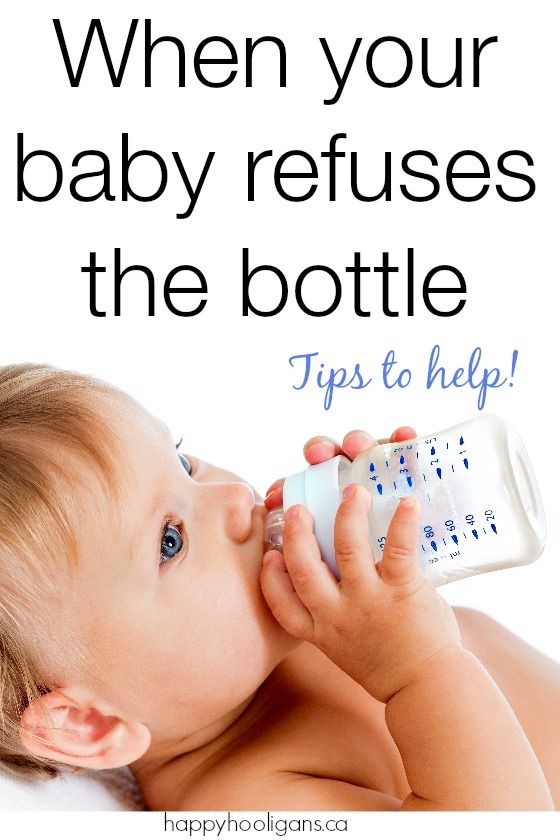 Even the smallest need to wash their hands before eating, and by the age of two, the baby himself will remind you of this. Eating is a useful ritual, it gives the child a sense of stability and a sense of self-worth, because the baby knows exactly the sequence of actions and copes with almost everything on his own! If you help him, accompany all your actions with the words: “We washed the handles under the tap, wiped them with a machine towel, now we go to the kitchen. Masha sits at her table, and her mother pours borscht into a plate with a ladle. Look how red he is! And, probably, very tasty!” nine0004
Even the smallest need to wash their hands before eating, and by the age of two, the baby himself will remind you of this. Eating is a useful ritual, it gives the child a sense of stability and a sense of self-worth, because the baby knows exactly the sequence of actions and copes with almost everything on his own! If you help him, accompany all your actions with the words: “We washed the handles under the tap, wiped them with a machine towel, now we go to the kitchen. Masha sits at her table, and her mother pours borscht into a plate with a ladle. Look how red he is! And, probably, very tasty!” nine0004
The child learns the rules of behavior at the table by observing the behavior of adults, listening to their instructions, as well as fairy tales that can tell about the rules of table setting, the order of dishes, the use of various cutlery, and also tell what happens if the rules are broken.
And remember that appetite comes with eating. A beautifully laid table, nice dishes, a positive example and support from adults - all this will help the child learn to eat on his own.



